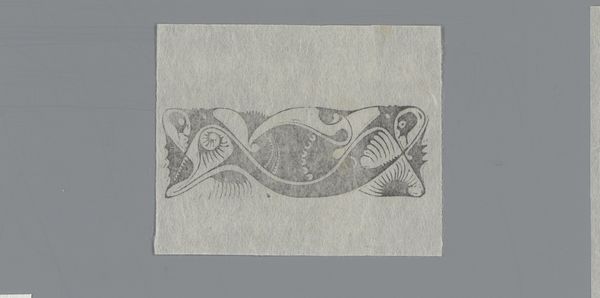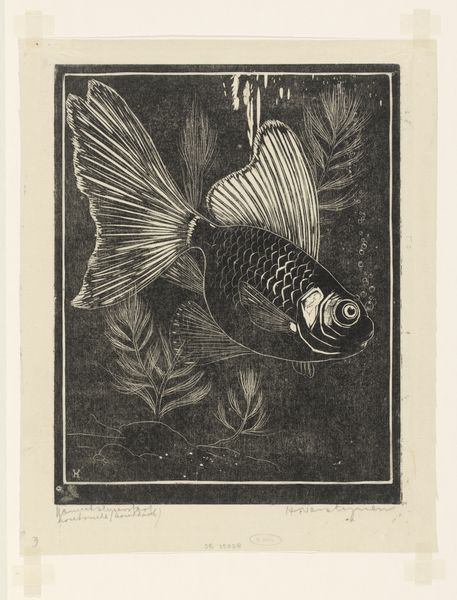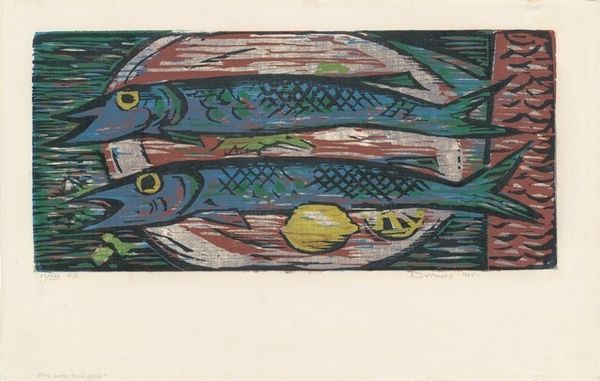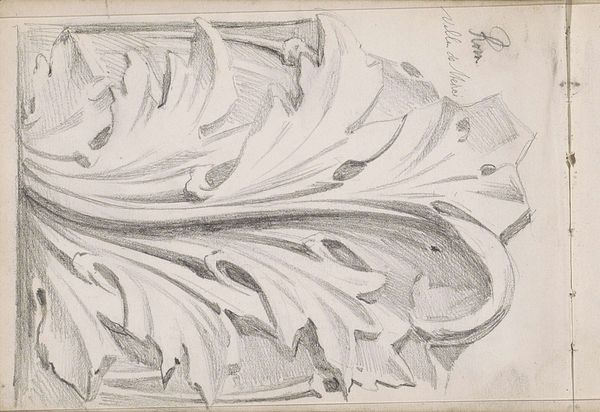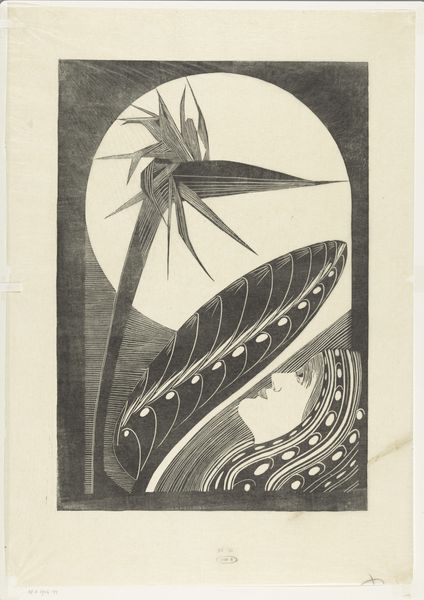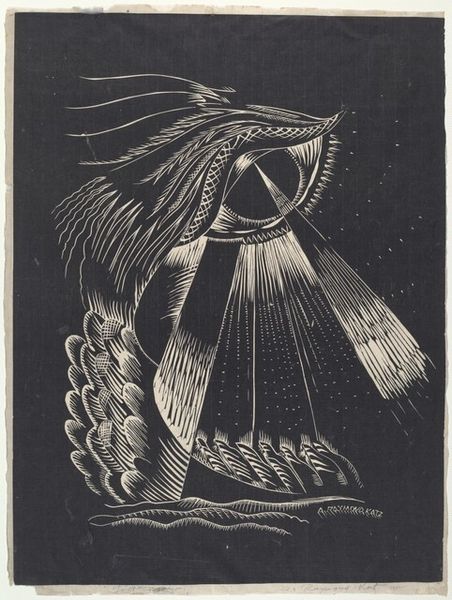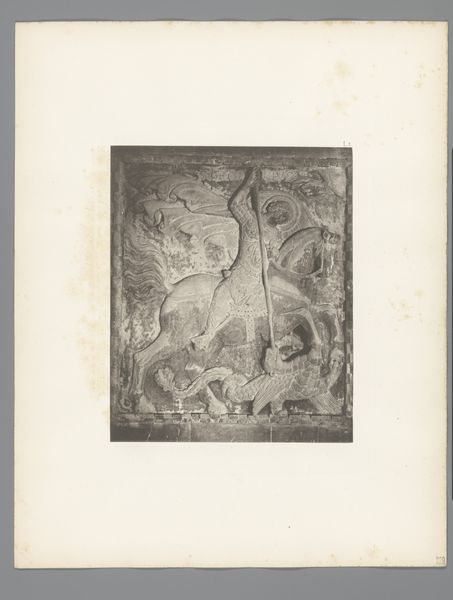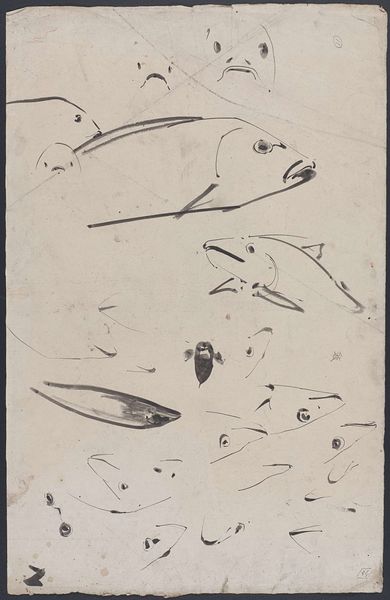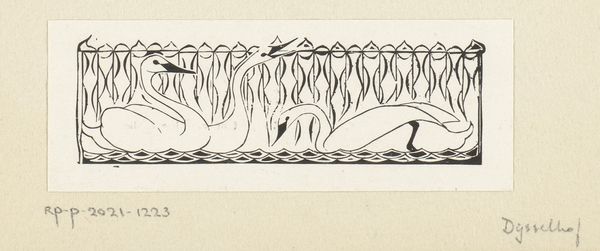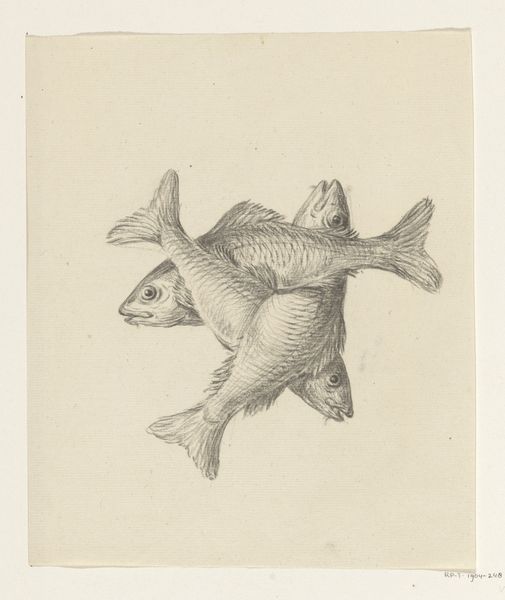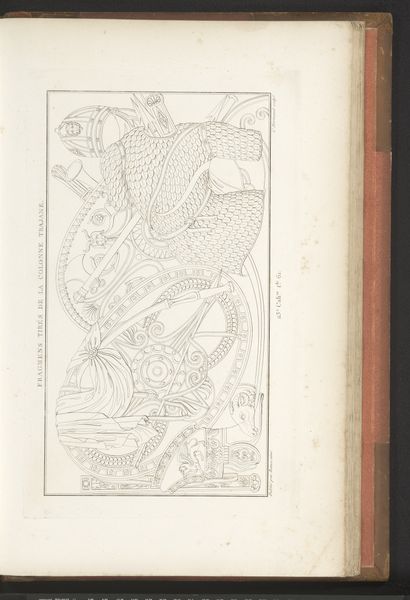
Fish and Flower, after an Egyptian Wall Painting at Thebes c. 1876 - 1878
0:00
0:00
Dimensions: 28.5 x 19.5 cm (11 1/4 x 7 11/16 in.)
Copyright: CC0 1.0
Curator: Oh, how charming! It's like a little window into a forgotten world. Editor: Indeed. What we have here is "Fish and Flower, after an Egyptian Wall Painting at Thebes" by Charles Herbert, a watercolor at the Harvard Art Museums. It's a faithful copy of a fragment, I believe. Curator: There’s a serene, almost meditative quality to the composition. The lotus flower, so central, between those two fish... It feels deeply symbolic. What do you read into it? Editor: Well, the lotus, certainly, signifies creation and rebirth in ancient Egyptian iconography. And fish, depending on the species, could represent abundance or even chaos, the untamed aspects of the Nile. Their placement suggests a duality, contained by that decorative band above. Curator: So, life emerging from, and ultimately returning to the river. I like that. It’s a bit like a visual poem, isn’t it? Editor: Precisely. Herbert captured something essential here—a sense of timelessness. Curator: It makes you think about what endures. That even a fragment can hold a universe of meaning.
Comments
No comments
Be the first to comment and join the conversation on the ultimate creative platform.

